 On a recent post, I added a note about respecting media snackers. It wasn't until a few days later that I actually had the time to think a bit more about what it meant and why (or why not) I should be trying to respect snackers.
On a recent post, I added a note about respecting media snackers. It wasn't until a few days later that I actually had the time to think a bit more about what it meant and why (or why not) I should be trying to respect snackers.
Truth is, providing content that could've been found anywhere (ie, in simply reposting a video) doesn't really make me feel like I accomplished a lot (other than ending a post drought). Sure, I do it from time to time (sometimes too often, given crazy schedules), but the posts I feel best about are the ones that took me more than 3 minutes to put up. The ones I've rewritten 10 times. The ones where I've added pictures and video simply as extras (or not at all), not as the focal point of the post itself.
I can understand the desire to respect media snackers (and admittedly, its a label that often applies to my own media habits), but specifically when it comes to blogging I don't know how much I really should. In fact, sometimes I think I give a bit too much respect to the snackers and don't dedicate enough effort to creating a more meaningful post that requires me to think about and clearly state my point of view on something (but I'm trying to get back on track).
But curious to hear what others think. What are you looking for when you come here (and to other blogs)? Quick bites of content, or posts that make you stop and think (or somewhere in between)? I'm sure it varies depending on the blog you're reading (I know it does for me), but interested to hear thoughts on the media snacker topic in general.
Share ideas that inspire. FALLON PLANNERS (and co-conspirators) are freely invited to post trends, commentary, obscure ephemera and insightful rants regarding the experience of branding.
Saturday, December 22, 2007
On Second Thought, How Much Should I Respect The Media Snacker?
Friday, December 21, 2007
The Role Of A Country's Brand
 Tata Motors today will be announced the winner of the bidding war over Jaguar and Land Rover from Ford. The latter has been struggling to do much of anything really with the British brands and has been looking to sell them off for some much needed cash.
Tata Motors today will be announced the winner of the bidding war over Jaguar and Land Rover from Ford. The latter has been struggling to do much of anything really with the British brands and has been looking to sell them off for some much needed cash.
But, the sale has many US Jaguar dealers upset. They believe that Indian ownership will dilute their luxury brand (as if Ford was the most prestigious automaker).
Personal biases aside, the whole incident was interesting to me because, in an increasingly global world where we often like to think that country of origin has less and less impact on what a brand/product means to people (well, perhaps except China), its still a strong issue. Indian business men and women have been left feeling like they've been slapped in the face, more or less told by these US dealers that the brand of India downgrades the brand of Jaguar/Land Rover. While on one hand (if I push myself to be very understanding) I suppose I can see why these dealers have reacted this way (it's still a third world country, blah, blah), seems to me that India has done quite a bit to prove itself as a nation on the rise, and deserving of the chance. But it also raises a broader question that I have been thinking about recently- is there another product category that has tied itself so closely to the country it is produced in? For decades American car companies have used (and continue to use) brand America (though it may not be in their favor anymore) to sell cars. It's amazing to me how strongly the brand of a nation is tied to the cars it produces, wise or not. Hell, some foreign automakers even feel like they have to defend themselves for being "foreign".
But it also raises a broader question that I have been thinking about recently- is there another product category that has tied itself so closely to the country it is produced in? For decades American car companies have used (and continue to use) brand America (though it may not be in their favor anymore) to sell cars. It's amazing to me how strongly the brand of a nation is tied to the cars it produces, wise or not. Hell, some foreign automakers even feel like they have to defend themselves for being "foreign".
Can any of you readers think of another product or category that so heavily associates itself with the country it comes from? And is this something you see continuing (growing/declining?)- in car makers or other categories? I've been thinking that that where a product comes from will increasingly become irrelevant, but this made me pause (and, perhaps, it is yet another sign of how out of touch car makers are with what's going on in the world).
Thursday, December 20, 2007
Top 10 quotes of 2007
Yale Book of Quotations compiled its list for 2007 (hope nothing memorable happens in the next ten days).
Number one was "Don't tase me bro!" It's compiled by Fred R. Shapiro, an associate librarian and lecturer in legal research at the Yale Law School.
It's interesting to consider these ten quotes in the context of a collective benchmark for our world in 2007 (and by interesting, I mean scary). 
Wednesday, December 19, 2007
Politics 2.0: Barely Political Takes On Ann Coulter
Want to be perfected? Look to Ann Coulter.
The funniest part is how little the peeps at BP actually have to try in order to portray Coulter as quite the extremist. But frightening to me is how many people in this country listen to and actually approve of what she has to say. One of her more recent books has nearly a thousand customer reviews on Amazon, with close to 600 giving her 4 stars or more...wow.
Posted by
avin
at
12/19/2007 11:49:00 AM
0
comments
![]()
Labels: barely political, Politics 2.0, Social Media, YouTube
Tuesday, December 11, 2007
The Whopper Freakout
This is genius.
(and in response to Seth's comments, I guess I'm doing my best to respect the Media Snacker).
Posted by
avin
at
12/11/2007 11:16:00 AM
4
comments
![]()
Labels: Brave New Media, Burger King, Social Marketing, Social Media, Viral Video
Monday, December 03, 2007
"The Youth Vote"
Future Majority, a blog that reports on youth voting, put together a set of tips for reporting on "the youth vote."
Tip #1 is my favorite:
The youth vote is not synonymous with students. In fact, students make up only a small part of the eligible youth vote. Only 21% of all 18-29 year olds are currently attending a college or university. That means that when you report on "students", you are leaving out the other 79% of all the individuals that make up the "youth vote." These people serve in our military, are struggling to raise families - and yes, have very different concerns from college students. I understand that makes it difficult for you to cram them into a cookie-cutter story about student aid activism and tuition costs, but you do them and your readers and our democracy a disservice when you limit your coverage to students.
Mike Connery, one of the site's bloggers, put together the tips after the CNN debate in which a college student was forced by producers to ask Hilary Clinton whether she preferred diamonds or pearls, instead of the original question about the Yucca Mountain nuclear situation.
The woman later lambasted CNN for forcing such a fluff question. This whole mini-drama falls in line with a topic of conversation that comes up frequently at Likemind: that "youth" are more mobile, more connected and more able to voice their opinions than any generation before them. This is the only world they know, and are aghast when that right is stepped on--as in the instance of diamonds v pearls. Yes, there's a twinge of self-righteousness that every sprouting adult experiences, but this generation is more able to retaliate when they've been wronged. Are they taking full advantage? Depends on the metrics we're using to judge. If we go back to voting, 49% of 18-29 year olds voted in the last election, a higher percentage than 65+. So watch out, youth have a big stick.
Posted by
salina
at
12/03/2007 05:38:00 PM
0
comments
![]()
Labels: Citizen Journalism, Gen Y, Likemind, Politics 2.0
Thursday, November 29, 2007
Social Marketing: Tay Zonday and Dr Pepper
Looks like Dr. Pepper has tapped the star power of Tay Zonday to help promote it's Diet Cherry Chocolate soda...
The appeal of Tay continues to amaze me. When Chocolate Rain first came out I thought most people would tire out on him pretty quickly. But I find myself checking his YouTube channel weekly waiting for the latest video to drop, and continue to be entertained every time. This latest clip- posted yesterday- has already racked up +206,000 hits, so guess I'm not alone.
I particularly love this line in his intro: "The is the Web, and its gonna murder your TV"
Get some of that Cherry Chocolate Rain.
Posted by
avin
at
11/29/2007 11:26:00 AM
7
comments
![]()
Labels: Social Marketing, Social Media, Viral Video, Web 2.0, YouTube
Tuesday, November 27, 2007
Planning For Good: Live Earth
Planning For Good (PfG) - strategists donating brain power to good causes. 1100+ members strong. Across the globe. In only a few short months, we've successfully briefed Idea Village in New Orleans, and Unicef. Now Live Earth. 
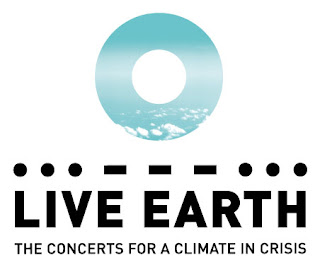 Live Earth Brief- Due December 17th
Live Earth Brief- Due December 17th
Get the brief @ Facebk and @ blog.
PfG Minneapolis - standby for meeting dates and location info. Sign up for updates, or "friend" me on Facebook and I'll add u to the PfG MPLS United army.
Planners in other cities around the globe may connect with their local cells here.
Posted by
AKI SYSTEMS 2600
at
11/27/2007 11:42:00 PM
0
comments
![]()
Labels: PfG, PfG MPLS United, planning for good
Panic Button: Made in China
An activist group is pushing for the resignation of a top Consumer Product Safety Commission official for failing to take a stronger stance on toy safety and has created a YouTube video to get its message across.
The Campaign for America’s Future is calling on Nancy Nord to step down as the CPSC’s acting director, largely for her opposition to legislation to strengthen the commission’s oversight on toy safety.
Millions of Chinese-made toys containing excessive levels of lead have been recalled in recent months from a number of toy manufacturers, including Mattel.
The group, which challenges “the big money corporate agenda” by encouraging people to speak up, says the commission is failing to protect children from dangerous toys.
To garner support, the organization created an online video that shows a “toxic” encounter between Mattel-made dolls Barbie and Ken.
“We’re trying to call attention to this,” says Eric Lotke, research director for Campaign for America’s Future. “The message is these toys are unsafe and the government authority, which is duty bound to keep us safe, is failing.”
In the video, Barbie and Ken run into each other at a bar. Their post break-up reunion ends the next morning at the Barbie Dream House. A week later, Barbie begins to complain to Ken that she is “having some symptoms.” When Ken asks what’s wrong, Barbie answers, “It’s…it’s lead poisoning.” It also reminds people that accessories for Barbie dolls were among the millions of imported toys recalled this year because of toxic levels of lead paint or other safety problems.
The group is relying on people to spread word of the video virally. Since its launch last week, the video has been viewed more than 60,000 times. And so far, about 7,000 people have signed the petition.
Reps from the organization plan to deliver the petition to Nord at the end of the week, Lotke said.
via Promo
Posted by
AKI SYSTEMS 2600
at
11/27/2007 08:06:00 AM
1 comments
![]()
Labels: "Don't Panic", Conscientious Consumption, Hactivism, Panic Button, Politics 2.0
Wednesday, November 21, 2007
How Much "I'm Sorry" Can Actually Mean
There's been a lot of negative shit (and that's just a small taste) on the airline industry in the press recently-- and most of it deservedly so. To be honest, a good experience on a flight is something I consider a luxury these days. If it's on time, the flight attendants don't give me attitude for asking for that second beer, and my luggage gets where it needs to go, I'm ok. But today I realized maybe I do care. Flying out of Minneapolis on NWA, our plane was delayed for an hour or so- not terrible by airline standards- but still a pain. The pilot took the time to get on the intercom multiple times to give us updates and apologize for the delay.
But today I realized maybe I do care. Flying out of Minneapolis on NWA, our plane was delayed for an hour or so- not terrible by airline standards- but still a pain. The pilot took the time to get on the intercom multiple times to give us updates and apologize for the delay.
That in itself wasn't surprising- in fact I'd be pissed if he didn't- but what I did appreciate is that fact that he was standing at the door of the plane as we exited, personally apologizing for the delay rather than delegating the task to the flight crew.
It illustrated for me yet again a point that companies so often ignore- getting their own people on board with the company brand/mission. Maybe I'm giving him too much credit, but the fact that the pilot came out and took the time to apologize raised my views of the airline in general. Having people who stand up and admit when they've messed up, personally extending their apologies to me, was a nice surprise from an industry I didn't expect it from. And seeing an employee who believes his company/brand should be better than that was refreshing.
Now the question is, will I get a similar experience on the way back to uphold my newly found positive sentiment for the company, or will it be shot down? We'll find out soon enough...
Posted by
avin
at
11/21/2007 12:02:00 AM
4
comments
![]()
Labels: Brand Action, Crisis Response, Public Relations, service
Tuesday, November 20, 2007
Metrics & Measurement from Futures of Entertainment 2
Second Panel Discussion: Metrics & Measurement
This is all about measurements online and in broadcast. Discussion about moving towards qualitative over quantitative research.
Panel Members:
Maury Giles – GSD&M Idea City
Stacey Lynn Schulman – Turner Broadcasting
Bruce Leichtman – Leichtman Research Group
Moderator:
Sam Ford – Project Manager for the Convergence Culture Consortium at MIT
Some opening thoughts from each of the panelists:
Maury: There is a difference between traditional creatives and those that come up from the digital side
Stacey: It is getting harder and harder to predict the upcoming television show hits, now that there are more than just 3 networks (like there were when she started), and so many cable channels.
Bruce: It is imperative to understand the present in order to research and understand the future. Also, focus on the masses, never think about you, or your social graph as representing the mass.
What do you do with new media?
We can’t apply old metrics to new media.
This leads back to the Writers Strike. They are striking about the future – looking at a hockey stick curve telling them that online content will be a huge increase in profit from online viewing. It was added that hockey stick graphs are just visual representations of someone’s opinion. Also, Bruce pointed out that when you look at the total amount of time spent watching (legal) online video, the average per online video user (NOT all online users) is only 6 minutes per month. That is VERY small to be striking over. This idea of online video needs to be viewed as an evolution, not a revolution.
(It should be noted that a lot of online TV viewing is done via illegal downloading, which was not included in this statistic)
Within this debate comes DVRs as another way to watch shows at a different time than when they are aired. What warrants an appointment event vs. non-appointment event? Sporting events, for example, you must watch before you hear the score from the news or a friend, and also you must have the game as a social currency with your friend. Another example is an anticipated event such as High School Musical 2. However, appointment is really just the time between the event airing and you needing to interact with anyone else or watch the news.
What is online success?
How do we define it? Do we continue to measure based on traditional means, such as eyeballs? What about buzz, and looking and viral information and how it travels? You can’t quantify online activity such as pass along viewership and repeat viewership. But clients want TRPs and metrics that they understand. However, if a show isn’t getting the high ratings, or a site isn’t getting a large number of hits, should it be terminated?
Look, for example, at The Office. It started as a small, loyal audience, where much of the viewing took place online. It didn’t get huge ratings, but it didn’t get kicked off the air. Eventually it became more mainstream and popular and now it has great ratings.
How do people make purchase decisions?
Research says that people get a gut reaction when the are exposed to an advertisement, then seek out additional information about the product/service, and finally make a decision about whether or not to purchase the product.
But how to you create an advertisement that will get this gut reaction? And if you do, how do you measure it?
Once again, it is something that is not quantifiable. There is a difference between the metric that you need to monetize and the metric you need to connect. How much does advertising drive sales? If you see an ad for toilet paper on TV, do you immediately run out to the store and purchase it? Or is that just branding? After all, branding DOES work.
So if branding works in traditional media, can it acceptably work in new media? Buzz is not about audience measurement, rather, it is about reputation. And there is a lot to be learned from what other people say about your brand. After all, criticism is not negative, it is important because the people care enough to publicize what is wrong in order to help you get better.
It was noted that there is an increase in consumers brand affinity scores if they got into online spaces to experience the brand vs. not. And online branding has the ability to reach the light TV viewer, who your TV likely passed over, where as the heavy TV viewer likely already caught your ad a few times on air.
Timing is important for ad consumption.
When creating advertisements, it is important to get the consumer at reachable moments, and take into account what people are doing at the time they are consuming the media. For example, at what point does TV play a relevant role in a purchase decision?
Lets look at call-in ads. These run during the day and late at night, but never during prime time. Why? During prime time, the audience is too engaged to engage in call-in ad, they want to be laid back during that time.
A few closing “think abouts:”
Bruce: Think evolution, not revolution. The technology is far ahead of the consumer behavior.
Stacey: Think about how to keep consumers involved without interrupting.
Maury: We need to study qualitatively and through ethnographic research how the consumer engages in the purchase decision making. Also, we should think about benefits of aggregating the budget into small audiences instead of just the masses.
More from Futures of Entertainment 2 at MIT
First Panel Discussion - Mobile Media
Lots of information, but if you are into mobile, it's good stuff. A bit text heavy, and a lack of who-said-what, but the ideas are there from some very smart people.
Panel Members:
Alice Kim – MTV Networks
Marc Davis – Yahoo!
Anmol Madan - MIT Media Lab
Bob Schukai – Turner Broadcasting
Moderator:
Joshua Green, Research Manager of the Convergence Culture Consortium at MIT
Mobile Media
What is so important about mobile media? On a global scale, by 2010, 4 billion people (which is most of who will ever be connected) will be connected to the Internet, most by phone, according to Davis.
Unfortunately, the U.S. is falling way behind in mobile and broadband, and having trouble adapting. According to Schukai, we are 2 years behind Europe and 3-4 years behind Asia, and those are the markets we can learn the most from (specifically Korea, China, Taiwan and India are markets to watch).
What is keeping us so far behind? We are still worried about coverage, while other markets are concerned with speed and service. Also, the consumer behavior isn’t there yet. The biggest barrier is the cost of data on phones. This is where the opportunity for advertisers lies – can advertisers offset this cost to make it more accessible? Mobile platforms are a great way to collect consumer data.
What should advertisers think about when developing mobile content?
The most important thing to remember when thinking about mobile platforms is that we should develop specific content for mobile, not just try to use other media content in a mobile format, for a variety of reasons.
First, we are not at the point yet of having one device that is our phone, computer, and television all in one, so we use each device at different times and for different purposes. Content should be both time and location aware, since this data is available. Think: in the morning you are commuting, in the evening you are at a baseball game. What kind of content is useful in each situation? Historically, carriers have been the aggregators of content, but there is an opportunity for others to come in and do this better.
Second, there is no mouse on most cell phones, which changes how users can view a website (there is an exception with the new iPhone interface). Content must be made to fit the interface.
Third, since the networks in the US are all separate, (unlike Europe, for example) social programs must be based on the core Internet and phone technologies in order to connect users of separate networks (since everyone has friends who use different networks).
Another important thing to think about with mobile media is that the users are not just consuming content with the device, but also producing content, earning the name “pro-sumers.” With still camera and video camera capabilities on GPS enabled phones, there are many new technologies that combine these features. This provides an opportunity for the creation of programs that assist users in producing their own content.
New Technologies:
ZoneTag – http://zonetag.research.yahoo.com
an application built to automatically tag pictures users take on their cell phone using GPS technology. Sites such as Flickr have tag maps showing where pictures are taken.
FireEagle – http://fireeagle.research.yahoo.com
An application built to use GPS to allow others to see where a user is geographically. Users can determine who can see where they are, and then how much information they can know (ex: I am in Cambridge vs. I am in building E15 on the MIT campus).
Privacy is an issue with the new technologies, which can hinder development of mobile applications. For example, CNN attempted to partner with an insurance agency to create an emergency weather SMS notification system, based on where the user was located, but it wasn’t well received because people didn’t like the company knowing their location. (This is likely to change as consumer behaviors change, think of social networking, for example. When Microsoft first proposed the idea, it was rejected on account of invasion of privacy. However, a few years later when Friendster, MySpace and Facebook came out, the population was ready).
The Future of Mobile:
Google is attempting to purchase a frequency in the US to introduce the Google phone, which could help move along the progress of mobile in the US. This platform is referred to as “open,” but what does open really mean? It has a bit of a closed meaning, in that it is just another platform to develop on.
Mobile is already changing the way news is reported, with the first video of the London subway bombings and the Virginia Tech shootings coming from mobile devices. These geo, time, and event aware devices will continue to change news.
“Status Casting” is becoming more popular through technologies such as FireEagle and Twitter, allowing people to constantly be updating where they are and when. This will likely lead to people expecting to always know where you are, similar to how people expect to always be able to call your cell phone now. In fact, these technologies that allow you to see where your friends are located are already very popular in Asia.
Video on cell phones can be used to create social broadcasting of self, instead of just creating informational content, news or entertainment. This can change the social media landscape, as people are continuing more and more to live their real lives online. (If people are moving towards living their real lives online, is that why Second Life is becoming old news now?)
There is the possibility to create applications that comprehend user behaviors, such as walking vs. standing still. Also, a phone could recognize your geo location, and with the knowledge of the behavior of people in your contacts list, it could tell you about a restaurant to visit that many of your friends have visited and liked. It creates an opportunity for that restaurant to offer you a deal via SMS to come try it out.
As more devices are given IP addresses, communication from one device to another is allowed, opening up transfer of information between devices. For example, if you are watching TV, the channel could switch over to your mobile phone as you walk away.
Bottom line? Mobile is on the rise, the US is behind, and nobody has quite figured the whole thing out.
Monday, November 19, 2007
Documentaries for the snoop in all of us.
It's not new, but the documentary pieces by Louis Theroux are great. I think he banks on an innocent look and a British accent to gain access into some very interesting (and usually closed or secretive) groups...suburban swingers, black supremacists. I'm equally impressed with his ability to ask questions directly and elicit answers that show an honest and human snapshot of these people's lives. Aki thinks they're open because subjects might not realize that folks stateside will be able to watch the videos (thank you Internet)...any other opinions? I suspect that these guys see Theroux as a vehicle to explain (justify?) themselves to the outside world that has a lot of preconceived notions about what they're all about. And true, many of the things they expose about themselves are surprising and thought-provoking, but there's also plenty of reconfirmation of why these people are acting on the fringes.
Friday, November 16, 2007
(not so live) blogging from Futures of Entertainment 2 Conference
Due to the lack of power outlets and pathetic battery life of my iBook, my blogging from the Futures of Entertainment 2 at MIT will be rather delayed.
The day started with opening comments from Henry Jenkins, director of the MIT Program in Comparative Media Studies (CMS), and Joshua Green, research manager for the Convergence Culture Consortium (C3).
The Future of Television:
We watched this video and discussed the present state and future of television because it shows that even in the late 1940's, people were predicting this interactivity in television. Jenkins discussed interactive television not just as clicking a button to be taken into an interactive on-screen experience, but instead as any form of interaction with a television show in the physical world, e.g. the transformation of 7-11's to Kwik E. Mart's as part of the Simpsons campaign. By this definition, the Kwik E. Marts are considered an example of interactive TV because they brought television into the physical world.
Other examples include CSI's involvement in Second Life, the Nintendo Wii (which was referred to as "the most important interface development in gaming") which changes the way that users interact with the screen, and another example is Heroes use of transmedia. 2 key examples from Heroes include the use of 9th Wonder comic books in the show, and a book which is coming out that includes extra backstory and flushes out secondary characters.
Transmedia is a hot topic - the development of content that can be delivered on many mediums is being used by both television shows and advertisers. Case in advertising: The Geiko Cavemen beginning as an advertisement and becoming a sitcom.
The Writers Strike:
The writers strike has been a primary topic of discussion at the conference, and there are two writers here from Heroes who spoke last night. A big part of the strike deals with the payment for content delivered over the web. Right now, this is considered promotional content, but many people get episodes of shows by downloading them or watching them in streaming video online. In the same way that music artists get paid every time their song is played, writers want to get paid every time their episode is viewed. This is a challenge because of the debate over online metrics and measurement, which will be discussed later.
Web 2.0:
Ah the daunting topic of Web 2.0... lets skip the talk about definition and get right into some topics.
Politics: The CNN/You-Tube Democratic Debate was new this year, and there won't be a Republican one. Mitt Romney's public refusal caused some new YouTube videos:
Note: Candidates can speak to us using all kinds of cartoons, but refuse to "debate a snowman"
Niche success: The idea that mass media is giving way to niche success is negated by the global popularity Harry Potter, for example.
Grassroots: Soulja Boy. Over a year ago, a 15 year old boy used blogs, social networks and YouTube to encourage people to take his music and creatively use his original music to create content. Term used to describe this: Remixing.
This is an example of what happened:
More to come.
Friday, November 09, 2007
Brainfood: Virtuality
Fallon strategic planners Aki Spicer (Aki Octagon) and Avin Narasimhan (Desi Stoneage) have come back from the future to offer their POV about Virtuality and it’s implications for brands.
One of the hottest debates in marketing circles today is the viability of virtual worlds like Second Life. What are they? What do people do there? Why? What’s in it for me—if anything? We’ve seen companies flooding these worlds, and some are finding it difficult to translate their virtual world presence into real world gains.
The truth is, we traverse virtual dimensions every day without even thinking about it. From financial transactions, to games, to our daily Facebook interactions with friends, Virtuality is a new normal and it impacts many facets of our lives. It is through this lens that we explore what Virtuality means now and in the future, and what our agency needs to know to extract the most from it.
*click to goto Slideshare to view the presentation FULLSCREEN.
Brainfood is an monthly digest of Fallon Planner’s strategic intelligence and bridges the gap between trends, business issues, and actionable opportunities for the agency and clients.
Companion Links:
Toyota Tacoma is the law giver!
Saatchi creatives comment on tacoma WOW spot
Ecology debate in 2L
CSI Episode features 2L integration
Please won't you stop the slaughter?
Posted by
AKI SYSTEMS 2600
at
11/09/2007 04:31:00 PM
1 comments
![]()
Labels: aki octagon, avin narasimhan, brainfood, desi stoneage, fallon planning blog, FallonLabs, planning, second life, ubiquitous computing, Virtual Worlds, virtuality, web 3.0
Imitation is the Highest Form of Flattery
Our boys over at Fallon London must be enjoying this. The much talked about Cadbury's Gorilla spot latest spoof comes from Wonderbra. Peep both below, judge for your self.
Cadbury original:
Wonderbra spoof:
Posted by
avin
at
11/09/2007 11:17:00 AM
1 comments
![]()
Labels: Contagious, Social Media, Spoof, Web 2.0, Word of Mouth, YouTube
Thursday, November 08, 2007
Commercial Interruption: Ball Buster, from Mego
Posted by
AKI SYSTEMS 2600
at
11/08/2007 12:11:00 AM
0
comments
![]()
Labels: Commercial Interruption, Guilty Pleasure
Wednesday, October 31, 2007
Intuition for play and purpose
Luis Von Ahn, a professor at Carnegie Mellon University is putting the collective intelligence of internet users to good use, and he's doing it in a resonant way: games. Von Ahn devised two easy online games, The ESP Game and Phetch that put active users together in an internet version of charades. One person sees a photo and tries to give clues for the others to go out and find it. 
Through these games, Von Ahn is giving people a fun way to solve a problem that cannot be solved by computers yet, called "human computation." The trick of these games is that descriptions for every image are logged--and stored as tags. The ESP site claims that every image on the web could be tagged in a matter of weeks should the game be played as much as other popular online games. And he very well could be on to something. During a speech at Google, Von Ahn pointed out the unharnessed potential of people playing games online....
Posted by
salina
at
10/31/2007 09:04:00 AM
2
comments
![]()
Labels: Information Age, Information Overload, Innov8 (or Die), Live Web
Tuesday, October 30, 2007
Wigetization: Daft Punk Promo Widget
 Daft Punk, the French electronic duo known for making music that scares your cat and using robots for live shows, have decided to promote their new live album, Alive, with an embeddable widget, which allows visitors to listen to previews of new tracks, buy the single, read Daft Punk’s biography, read the newsletter, and see a photo gallery of the band.
Daft Punk, the French electronic duo known for making music that scares your cat and using robots for live shows, have decided to promote their new live album, Alive, with an embeddable widget, which allows visitors to listen to previews of new tracks, buy the single, read Daft Punk’s biography, read the newsletter, and see a photo gallery of the band.
“Standard” promotional tools are giving way to user-syndicated web based promotion and social networking - at costs that are next to nothing.
via Mashable and Brand Republic
Posted by
AKI SYSTEMS 2600
at
10/30/2007 07:07:00 AM
2
comments
![]()
Labels: Brave New Media, Web 2.0, widgetization
Friday, October 26, 2007
Makes You Think.
"Interesting Snippets" is a flickr site for Lynette Webb, a Senior Strategic Insights Manager at Google UK (previously incorrectly described (by me) as Director of Futures). In her own words, it's "my personal dumping ground for various cool quotes, the odd stat, as slides to talk around when describing how things are changing online and in media & communications generally."
It's essentially a blog that is headlined with an interesting picture and quote (often from a blog, article or speech). I would love to ask which usually comes first: inspiration from a photo, the stat or a broad idea that she finds can be articulated in one of the first two. 

Friday, October 19, 2007
What's Next: The New Keyboard for the Texting Generation
 Given I'm just a couple years out and, as many who know me would agree, still as prone to immature humor as ever, one of my favorite sites continues to be College Humor. While running through the RSS feeds today, caught this article on what a keyboard redesigned for the texters and IM junkies among us may look like. Silly as it might be, makes me wonder if this would actually be met with success...
Given I'm just a couple years out and, as many who know me would agree, still as prone to immature humor as ever, one of my favorite sites continues to be College Humor. While running through the RSS feeds today, caught this article on what a keyboard redesigned for the texters and IM junkies among us may look like. Silly as it might be, makes me wonder if this would actually be met with success...
The left...
and the right side...
can't forget that number pad
Posted by
avin
at
10/19/2007 12:28:00 PM
3
comments
![]()
Labels: Brave New Media, design, Gen Y, IM, Shift Happens, texting, what's next, Youth
Thursday, October 18, 2007
Trash Talk: Plastic Bag Gallery
The Photographers’ Gallery invited people to submit photographs of plastic bags spotted around London and elsewhere which can be viewed here.
[…]Reminding us of our ability to consume and dispose, this project provides the public with their own platform for visual expression and is part of the Gallery’s continued remit to encourage further audience participation and highlighting photography’s influence in everyday life.[…]
via GHAVA
Posted by
AKI SYSTEMS 2600
at
10/18/2007 06:30:00 PM
0
comments
![]()
Labels: Eco-Future, green living, Trash Talk
Wednesday, October 17, 2007
Guilty Pleasure: OS Bape
Fashion appareller Bathing Ape's website is more like an Operating System that loads onto your computer, not on the web per se. Nothing dangerous happens, prob not sticky enough to leave it on forever, but an interesting approach toward maintaining Bape's "band apart" ideals. Accepting this BAPE OS is sorta like bondage games - with a brand you like. 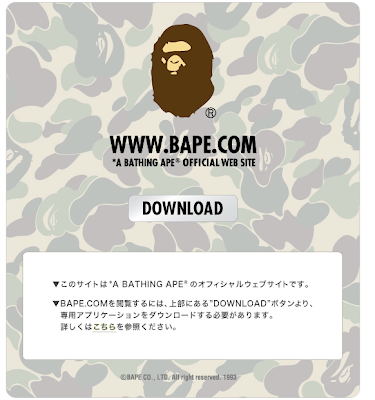
The top left corner (consider it the safeword) exits out when you're bored with it...or gotta get work done. It actually works in the background on my MacBook, so you may never need to exit out, actually.
A great strategy for a passion brand like uber-luxe Bape...the average Wal-Mart and Meineke Mufflers prob can't roll like this, though.
thnx to Simon Law for the pointr.
Posted by
AKI SYSTEMS 2600
at
10/17/2007 07:53:00 AM
0
comments
![]()
Labels: bape, bathing ape, Guilty Pleasure
Tuesday, October 16, 2007
Virtuality: CSI Murder Investigation Enters Second Life
Next week 10/24 CSI:NY will be taking it's mainstream audience- and a historically traditional network- into the virtual world for an hour of murder mystery. The episode will feature the detectives perusing the world for clues as they try to solve the case, and will attempt to draw people in by inviting them to CBS.com for a "live simulation" of Second Life and the chance to be virtual detectives to see if they can crack the mystery. The NY Times has more details, worth a read.
An interesting and perhaps the most mainstream play since virtual world buzz began to get people engaged with Second Life. Could potentially be a turning point for 2L: if, even after the counterintuitive and confusing process of getting started and moving around is simplified and tied to a network TV show, people still don't engage, what then? What's next in the evolution of Virtuality? On the other hand, if it's executed well and gets a strong reaction, what's the next step to deepen that engagement?
I'm not a fan of the show- truth be told I've never seen an episode- but I'm definitely eager to see how this turns out.
In the meantime, suppose we'll have to settle for the trailer while we wait a week for that virtual goodness.
Wednesday, October 10, 2007
Radiohead Did It Again
I thought about disclaiming off the bat that I am a diehard Radiohead fan, but then realized that's like saying I have two arms and two legs--describes nearly everyone.
Radiohead has built itself into a category of untouchables through decades of unbelievable work. It's one of the few bands ever to evolve with changing times and produce drastic evolutions from album to album.
Now, Radiohead has turned the inner workings of the music industry on its ear. Today, Radiohead released an album that you can buy for whatever price you like. On its own site--not through a record label. Name the amount and you will own a digital version of the new album. By cutting out the middleman and eliminating physical products to distribute, Radiohead keeps most of the money. In theory--the site is so overwhelmed with traffic that I can't get it to load.
Maybe the real disclosure should have been that I am predisposed to thinking anything Radiohead does is awesome. In reality, it's probably not a sustainable business model for anyone but the top artists who have a devout following of millions, but it is a signal that there are ways to distribute music outside of EMI and iTunes. 
Brave New Media: How Facebook Users Spend Their Time
Compete.com blog discusses "how Facebook users spend their time".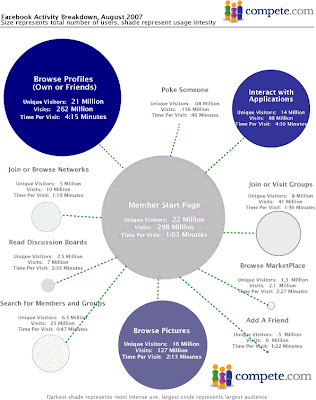
Not unsurprisingly, people spend most of their time browsing profiles, but using applications is getting up there in terms of number of users, and the time spent is almost as long.
And speaking of Facebook Apps...Compete data show that Facebook activity grew 32% from May to August, 2007, with more than a third of the growth coming from the new applications.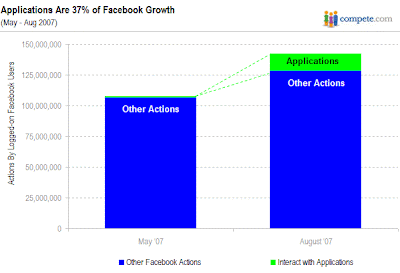
And furthermore...O'Reilly released a report The Facebook Application Platform and it has good and bad news. Good: there are nearly 5000 Facebook applications, and the top applications have tens of millions of installs and millions of active users. Bad news: 87% of the usage goes to only 84 applications! Only 45 applications have more than 100,000 active users. "This is a long tail marketplace with a vengeance -- but unfortunately, the economic models (for developers at least, though not for Facebook itself) all rely on getting into the very short head."
Here's the distribution of active users among the top 200 developers. (Some developers have multiple popular applications.) As you can see, the drop-off is extremely steep: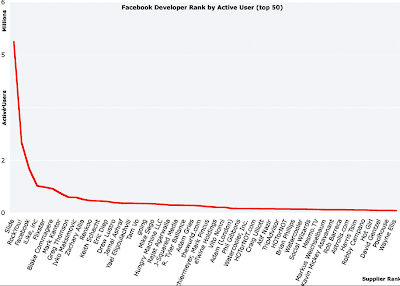
Doh! Tim O'Reilly says: "This doesn't mean that Facebook won't become an important platform for developers, just that a throwaway Facebook app is not the ticket to quick riches. Embracing the Facebook opportunity requires more than just optimism."
via O'Reilly Radar and Compete.com Blog
Posted by
AKI SYSTEMS 2600
at
10/10/2007 08:06:00 AM
1 comments
![]()
Labels: Brave New Media, Hive Mind, Live Web, Mass Interactive, Social Media, Social Networking, Web 2.0
Monday, October 08, 2007
Guilty Pleasure: LOL Cat Rewrites the Bible
Beloved by cat fans, humor fans, and internet-randomness fans, LOLCat has taken one more step in formalizing its language as, well, a real language. LOLCats is translating the Bible.
Excerpt from the Book of Matthew:
19. Joseph was all liek "Oh snap, dis embarrassin. I's gonna hide mah wife".
20. But when he was tihnkin, zomg, angel frm Ceiling Cat was in his dreems! Angel sayed "Hai, don't be fraided to has Mary for ur wife, cuz her baby be frm Holey Ghosty."

For more LOL Cat love: Time Magazine article from July.
Thursday, October 04, 2007
Guilty Pleasure: PassiveAgressiveNotes.com

The name is self-explainatory. Not since Hot Chicks With Douchebags have I seen a more amusing display of wild humans behaving in their natural habitats.
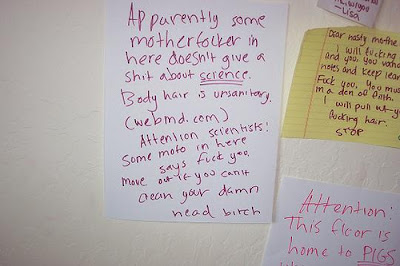


Tuesday, October 02, 2007
The American Mustache Institute

In case you haven't heard, there's a Fallon Mustache Contest going on and I'm a proud participant.
It started yesterday, the same day that New York Times advertising columnist Stuart Elliott wrote this feature on the American Mustache Institute (leadership pictured above).
As Elliott points out, this is more than a humor site. It's a net-roots PR effort designed to raise awareness for an annual event held in St. Louis, called 'Stache Bash, that raises money to fund a baseball league for disabled kids.
So instead of sending out a few press releases and crossing their fingers, they created a community with a fun hook that caught on with bloggers and even mainstream sports media.
According to Dan Callahan, a VP at Fleishman-Hillard in St. Louis (Omnicom) and one of the guys behind this idea (and, presumably, his mustache):
“...based on where things are headed, we thought we could do better by creating a community” through the online poll because “the idea of online community-building is the future.”
Ah yes, The Future.
The poll that launched the site last summer asked visitors to vote for the Top Sports Mustache of All Time.
Write-in candidate Keith Hernandez won.
Now they're asking us to vote on who deserves to be on Mount "Stachemore".
Are they really going to carve a memorial to the greatest mustaches of all time? I hope so, as long as the kids still get their baseball gear and everything.
And by the way, from Wikipedia: "The word is pronounced with the stress either on the first syllable or, more properly, on the second syllable."
'Stache on ya.
(Fallon Mustache Contest updates to follow. End date: Nov 1, 2007)
Posted by
Marty Wetherall
at
10/02/2007 12:46:00 PM
2
comments
![]()
Labels: american mustache institue, mustache, PR Stunt
Social Currency: Cavemen on Primetime TV...But Does It Matter?
Peep a short clip of one of the Cavemen- of Geico fame- on the View:
Whether or not you like the campaign, got me thinking that, despite how much quirky characters can win attention from the masses, it can be a dangerous trap to fall into. Seeing it as an end (ie creating a TV show just because people "like" your characters) and not a means to an end. Attention is great, but if it doesn't translate into results, all is lost.
Example: a lot of people love commercials for Bud Light, Miller Light, and (my personal favorite) Miller High Life commercials. But, as funny as I think the latter are, do I drink it? Hmm...
Nike (and in particular Jordan) are some of my all-time favorite commercials...but I haven't bought a pair of either since I was in middle school.
Point being, it's attention getting creative, people talk about those spots, even love them...but do they act? Surely I'm inserting my own bias with these examples, so back to the point- I'm not saying the Cavemen haven't brought any results for Geico. But who is going to watch a TV show based on them? Who cares? :30 of them may be funny...but 30 minutes? Seriously? And even if people watch it...are they switching to Geico?
Anyone else have an opinion to throw in? Will you watch the show? Do you even like the Cavemen? If you're a Geico customer, what does it all do for you?
Posted by
avin
at
10/02/2007 01:44:00 AM
9
comments
![]()
Labels: Asterisk Advertising, Brand Action, Brand Cult, Culture, Culture Madison and Vine
Tuesday, September 25, 2007
Virtuality: Google Planning to Launch "My World"
Ars Technica (Art of Technology blog) reports that Google is prepping it's own entry into the field of Virtual Worlds, potentially named "My World". Students at ASU (a school Google has a strong working relationship with in the past) this weekend received questionnaires that "hinted strongly" at the possibility that they would be among the first to test such an app later this year.
(Screengrab of the questionnaire courtesy of the MacRumors forum).
A logical step for Google, given that they've already made a foray into Virtuality with Google Earth.
 And a significant move, not because it's just another virtual world for people to choose from, but because it is a mainstream tech giant adopting what some decry as little more than a passing fad, and it's yet further evidence that a 3D internet is the next logical progression of our digital lives.
And a significant move, not because it's just another virtual world for people to choose from, but because it is a mainstream tech giant adopting what some decry as little more than a passing fad, and it's yet further evidence that a 3D internet is the next logical progression of our digital lives.
A few snippets from the article:
"The notion that Google might test the new service with ASU students isn't very outlandish, then, so the question is more a matter of what the service will be rather than if it will come to fruition."
"To us, it seems that a virtual world is natural progression of Google Earth and its 3D representations of... well, the Earth. Users could create avatars, like those in Second Life. The "street view" feature of Google Maps could be incorporated, as well as Google SketchUp, with avatars being able to walk around on actual streets and enter real buildings to check out what's inside and socialize with other avatars. But the purpose wouldn't be to rival Second Life and all of its fantasy, sex, and moneymaking schemes."
"Whatever "My World" ends up being, we think that Google will go much further than just competing with Second Life—if the company makes it functionally useful and ties it in with services that people already use, it may have a chance of succeeding at getting average Internet users to participate."
Posted by
avin
at
9/25/2007 03:35:00 PM
2
comments
![]()
Labels: 2L, Brave New Medi, Brave New Media, Postcards from Second Life, Virtual Worlds, virtuality, what's next
Monday, September 24, 2007
Virtuality: Social Media in 3D
 Caught a post over on adverblog about the launch of a new social networking site for your virtual self, Koinup. The site allows you to connect all of your virtual world experiences in one network- your activities from Second Life, World of Warcraft, The Sims all in one location, where you can post content of your adventures (video of a recent SL trip for example) and browse through the virtual lives of the sites other members.
Caught a post over on adverblog about the launch of a new social networking site for your virtual self, Koinup. The site allows you to connect all of your virtual world experiences in one network- your activities from Second Life, World of Warcraft, The Sims all in one location, where you can post content of your adventures (video of a recent SL trip for example) and browse through the virtual lives of the sites other members.

 This brings an interesting new layer to all of the talk around virtual worlds. KoinUp elevates the discussion above "worlds" and highlights the trend that our online activity is increasingly becoming virtual, so much so that we now need a social web to bring together all of the virtual identities that define us in the digital space.
This brings an interesting new layer to all of the talk around virtual worlds. KoinUp elevates the discussion above "worlds" and highlights the trend that our online activity is increasingly becoming virtual, so much so that we now need a social web to bring together all of the virtual identities that define us in the digital space.
I just came across this (thanks Aki) and while interested, still haven't quite decided where I see this going and how "big" it may be. Any readers out there more familiar and care to weigh in? For those of you in virtual worlds, do you see yourself social networking your virtual identities? Are you so dedicated that, in addition to maintaining Facebook, MySpace, and your other real world social webs that you would start a virtual side?
Posted by
avin
at
9/24/2007 01:08:00 PM
0
comments
![]()
Labels: 2L, Brave New Medi, Brave New Media, Postcards from Second Life, Social Media, Social Networking, Virtual Worlds, virtuality, what's next
Thursday, September 20, 2007
DO: "it's up to us"
Mark talks a lot around here about a growing sense of autonomy among Americans. The increased sentiment that “it’s up to me” and subsequent actions to protect “me and mine.” I grew up with a dad who staunchly believed in the right to bear arms, just in case the government went so askew that citizens needed to take up arms in correction. So I’ve had trouble reconciling my historical perception of autonomy with Mark’s more evolved version. 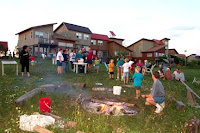
 An article in Time magazine this week helped me bridge the gap. It profiled a new way of living, the EcoVillage at Ithaca (EVI). Liz Walker, a co-founder, describes her vision for EVI as “trying to create an attractive, viable alternative to American life.” It sounds really great. Over 150 people live in the community, and they all work together to reap benefits of communal food, daycare, and laundry.
An article in Time magazine this week helped me bridge the gap. It profiled a new way of living, the EcoVillage at Ithaca (EVI). Liz Walker, a co-founder, describes her vision for EVI as “trying to create an attractive, viable alternative to American life.” It sounds really great. Over 150 people live in the community, and they all work together to reap benefits of communal food, daycare, and laundry.
But it’s not a commune. These are people who are dedicated to reducing their carbon footprint (and are very successful in doing so) by changing the way they live (not just planting 80 trees to make up for that vacay in Mexico).
And they’re not hippies. The community is very technologically advanced, adopting some bleeding-edge conservation concepts. Homes are “Norman Rockwell meets Al Gore,” and run up to $300k, yet there is a waiting list to join.  A second example of people getting together for change is happening in Philadelphia where crime has reached an unacceptable level. A group of concerned citizens, comprised of local executives and men who worked on the Million Man March, brought a proposal to the Police Commissioner: allow them to organize as volunteer peacekeepers. The plan is to gather up to 10,000 men to patrol the streets—unpaid and unarmed—to watch out for criminal activity. The thought is that a roving band of bystanders and witnesses will deter would-be criminals.
A second example of people getting together for change is happening in Philadelphia where crime has reached an unacceptable level. A group of concerned citizens, comprised of local executives and men who worked on the Million Man March, brought a proposal to the Police Commissioner: allow them to organize as volunteer peacekeepers. The plan is to gather up to 10,000 men to patrol the streets—unpaid and unarmed—to watch out for criminal activity. The thought is that a roving band of bystanders and witnesses will deter would-be criminals.
I guess now that I read this post, the examples aren't all that far from the essence of my dad's point of view: he was just protecting our right to take matters into our own hands and these people are taking action on that right.
via NPR
Posted by
salina
at
9/20/2007 02:07:00 PM
3
comments
![]()
Labels: "It's Gettin' Hot In Herre", Conscious Consumption, DO, green living, Innov8 (or Die)
Guilty Pleasure: Graf Innovations
Animation Walls from Blu
More



More from 6meia
via Wooster Collective
Posted by
AKI SYSTEMS 2600
at
9/20/2007 02:01:00 PM
0
comments
![]()
Labels: animation, grafiti, Guilty Pleasure
Live Web in Plain English (as Advertisement)
Common Craft strikes again, this time for the new Google Docs app - yet another smart play at making Google your dashboard for digital living (Facebook is aiming at becoming your dashboard for social life).
*Google Docs don't work for Safari...so, ya'll lemme know how it's workin'.
Posted by
AKI SYSTEMS 2600
at
9/20/2007 07:41:00 AM
0
comments
![]()
Labels: : How To..., crowdsourcing, Hive Mind, Live Web, Mass Interactive, rss, Social Networking, Web 2.0, wikinomics, Wisdom of Crowds
Wednesday, September 19, 2007
Emoticon Celebrates 25 Years
![]() Mashable notes that the ubiquitous emoticon is 25 years old. Happy Birfday Emoticon (sing the song, ya'll)!
Mashable notes that the ubiquitous emoticon is 25 years old. Happy Birfday Emoticon (sing the song, ya'll)!
It turns out that the emoticon was not just an afterthought, but a much discussed idea addressing a problem early users of the system were having in separating sarcastic comments from serious ones. Carnegie Mellon professor Scott Fahlman proposed a smiley face to indicate joking and an upside down one to indicate unhappiness in a thread (captured below).![]()
Respect the architect and recognize game.
Posted by
AKI SYSTEMS 2600
at
9/19/2007 02:11:00 PM
0
comments
![]()
Labels: emoticon, Social Networking, virtuality
















